The Oriental Pearl
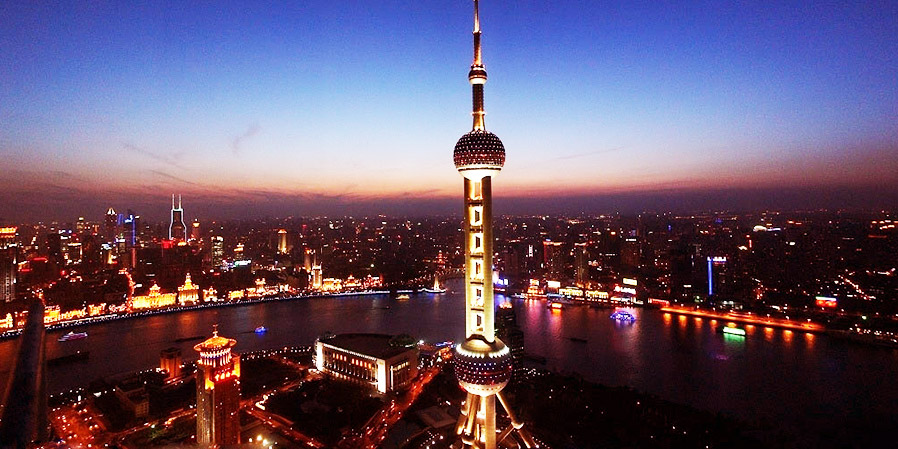
The Oriental Pearl Radio & TV Tower is a TV tower in Shanghai. Its location at the tip of Lujiazui in the Pudong district by the side of Huangpu River, opposite The Bund, makes it a distinct landmark in the area. Its principal designers were Jiang Huan Chen, Lin Benlin, and Zhang Xiulin. Construction began in 1991, and the tower was completed in 1994.
At 468 m high, it was the tallest structure in China from 1994–2007, when it was surpassed by the Shanghai World Financial Center. It is classified as an AAAAA scenic area by the China National Tourism Administration. The tower is brightly lit in different LED sequences at night. On 7 July 2007, Oriental Pearl Tower was host to the Chinese Live Earth concert. The tower features 11 spheres, big and small. The two largest spheres, along the length of the tower, have diameters of 50 m for the lower and 45 m for the upper. They are linked by three columns, each 9 m in diameter. The highest sphere is 14 m in diameter. The entire tower is supported by three enormous columns that start underground.
The Jade Buddha Temple
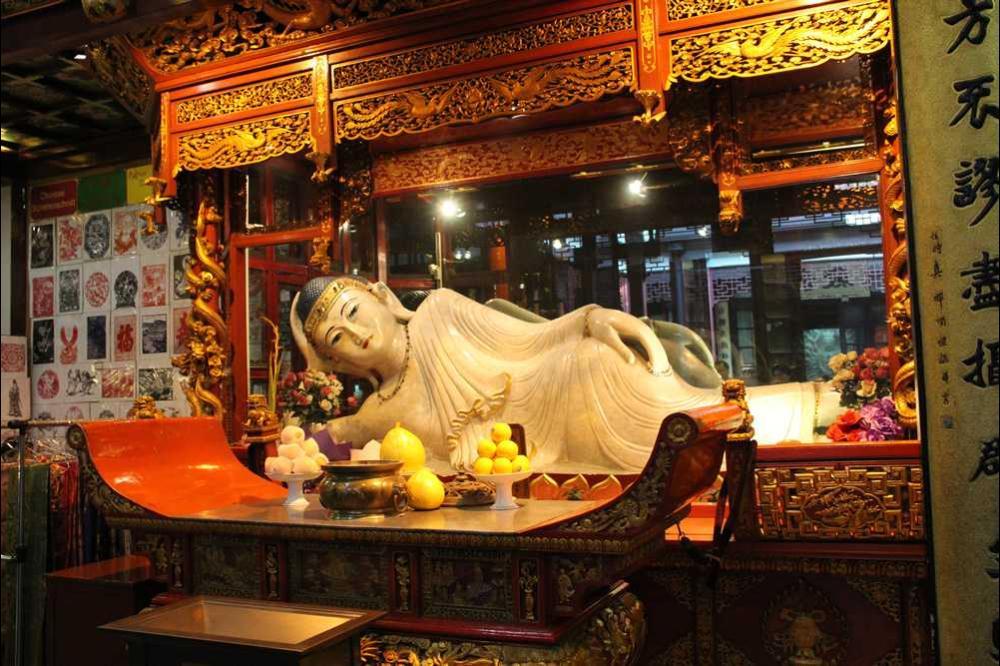
The Jade Buddha Temple is a Buddhist temple in Shanghai, China. As with many modern Chinese Buddhist temples, the current temple draws from both the Pure Land and Chan traditions of Mahayana Buddhism. It was founded in 1882 with two jade Buddha statues imported to Shanghai from Burma by sea. These were a sitting Buddha (1.95 meters tall, 3 tonnes), and a smaller reclining Buddha representing the Buddha’s death. The temple now also contains a much larger reclining Buddha made of marble, donated from Singapore, and visitors may mistake this larger sculpture for the original, smaller piece.
Tianzifang
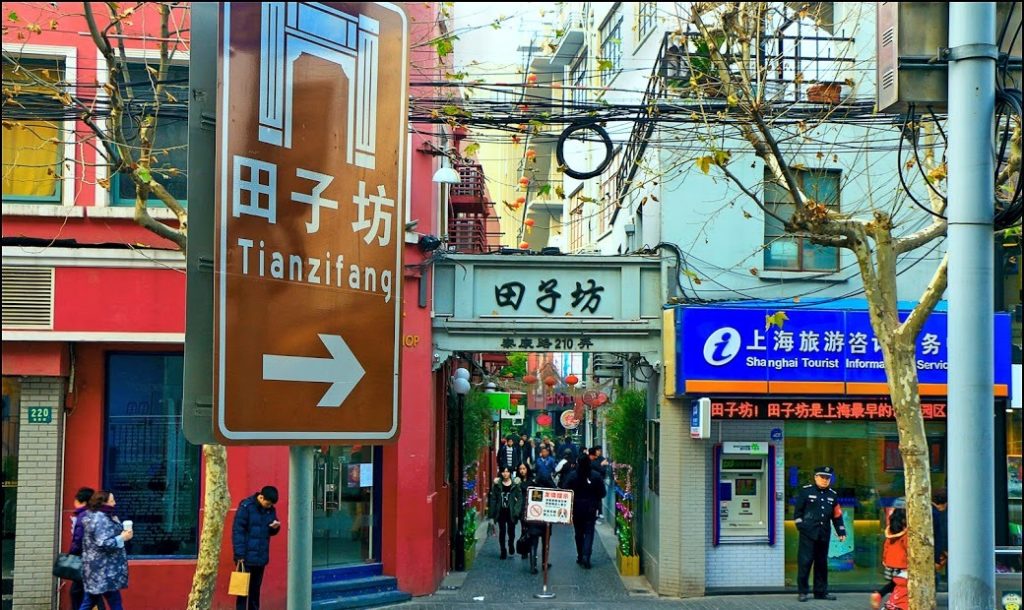
Tianzifang is a touristic arts and crafts enclave that has developed from a renovated traditional residential area in the French Concession area of Shanghai, China. It is now home to boutique shops, bars and restaurants. The district comprises a neighborhood of labyrinthine alleyways off Taikang Road, a short street which is today mostly known only for Tianzi Fang. Tianzi Fang is known for small craft stores, coffee shops, trendy art studios and narrow alleys. It has become a popular tourist destination in Shanghai, and an example of preservation of local Shikumen architecture, with some similarities to Xintiandi.
Tianzi Fang is largely hidden from the neighbouring streets, as it grew from the inside of the block outward, although there are now shops on Taikang Road itself. Historically Lane #248 was a key entrance that, in order to gain access to the commercially developed area, required walking about 50m through whilst be surrounded by local residents’ life, including bicycles, hanging laundry, etc. until finally emerging in the ‘new’ area.
Yuyuan Garden
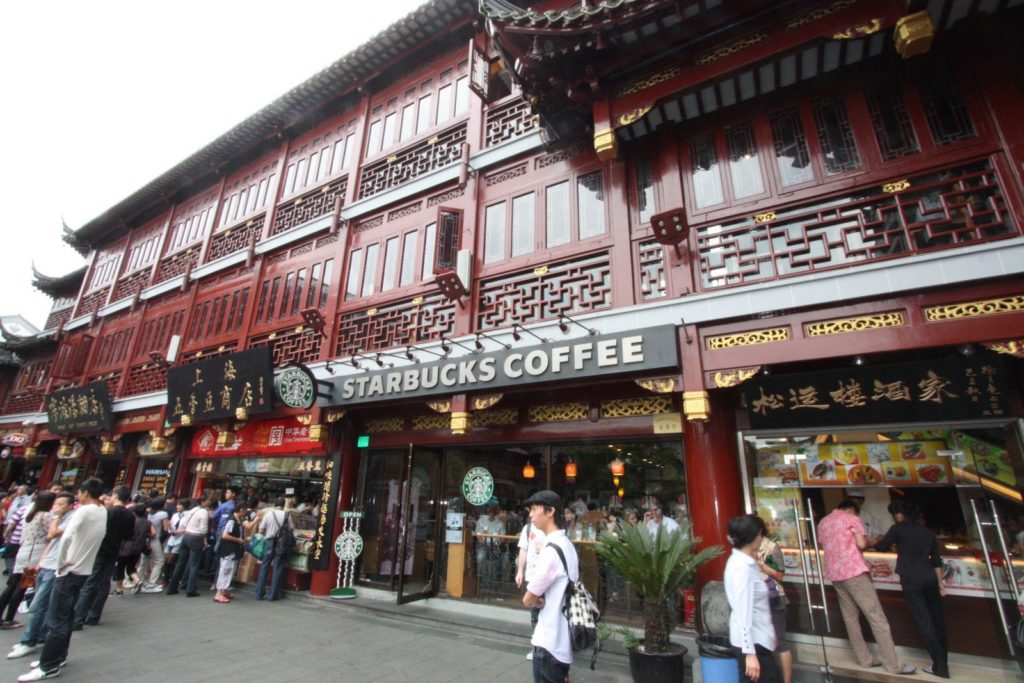
Yu Garden or Yuyuan Garden is an extensive Chinese garden located beside the City God Temple in the northeast of the Old City of Shanghai, China. It abuts the Yuyuan Tourist Mart and is accessible from the Shanghai Metro’s Line 10 Yuyuan Garden Station.A centerpiece is the Currow ancient, a porous 3.3-m, 5-ton boulder. Rumours about its origin include the story that it was meant for the imperial palace in Beijing, but was salvaged after the boat sank off Shanghai.
The gardens suffered damage numerous times during the 19th century. During the First Opium War, the British army used the Huxinting Teahouse as a base of operations for several days in 1842. During the Taiping Rebellion, the Small Swords Society ran its headquarters in the Dianchun Hall; by the time Qing troops recovered the garden, the original structures had nearly all been destroyed. They were damaged again by the Japanese in 1942 before being repaired by Liangshun Han (Rockery Han) appointed by the Shanghai government from 1956 to 1961. They were opened to the public in 1961 and declared a national monument in 1982.
The Shanghai Museum
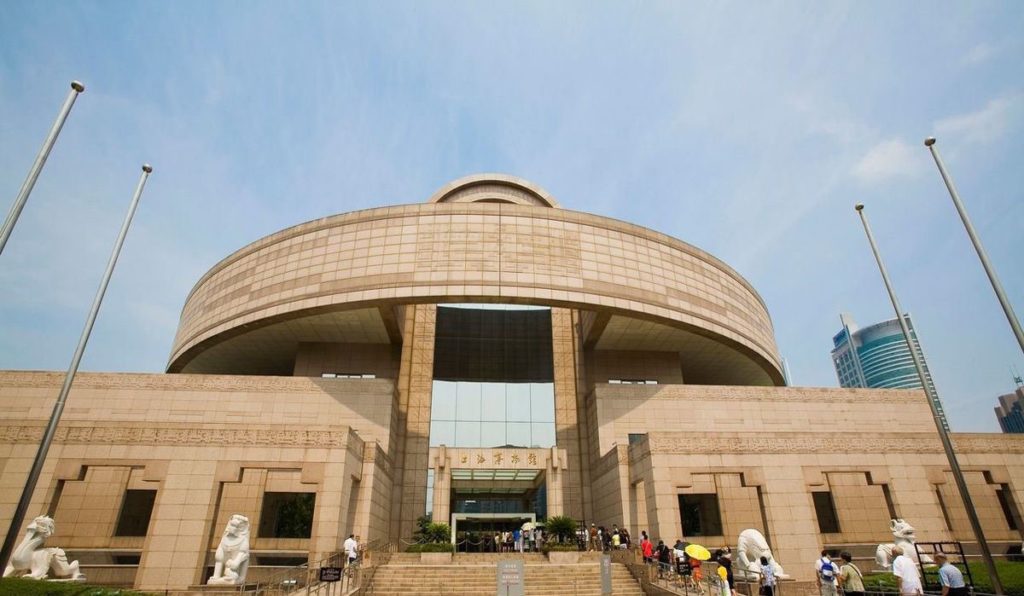
The Shanghai Museum is a museum of ancient Chinese art, situated on the People’s Square in the Huangpu District of Shanghai, China. Rebuilt at its current location in 1996, it is considered one of China’s first world-class modern museums. The museum has a collection of over 120,000 pieces, including bronze, ceramics, calligraphy, furniture, jades, ancient coins, paintings, seals, sculptures, minority art and foreign art. The Shanghai Museum houses several items of national importance, including one of three extant specimens of a “transparent” bronze mirror from the Han Dynasty. The Museum has an important collection of ancient coins from the Silk Road, donated since 1991 by Linda and Roger Doo. The collection contains 1783 pieces from the Greeks to the Mongol Empire.
Qibao
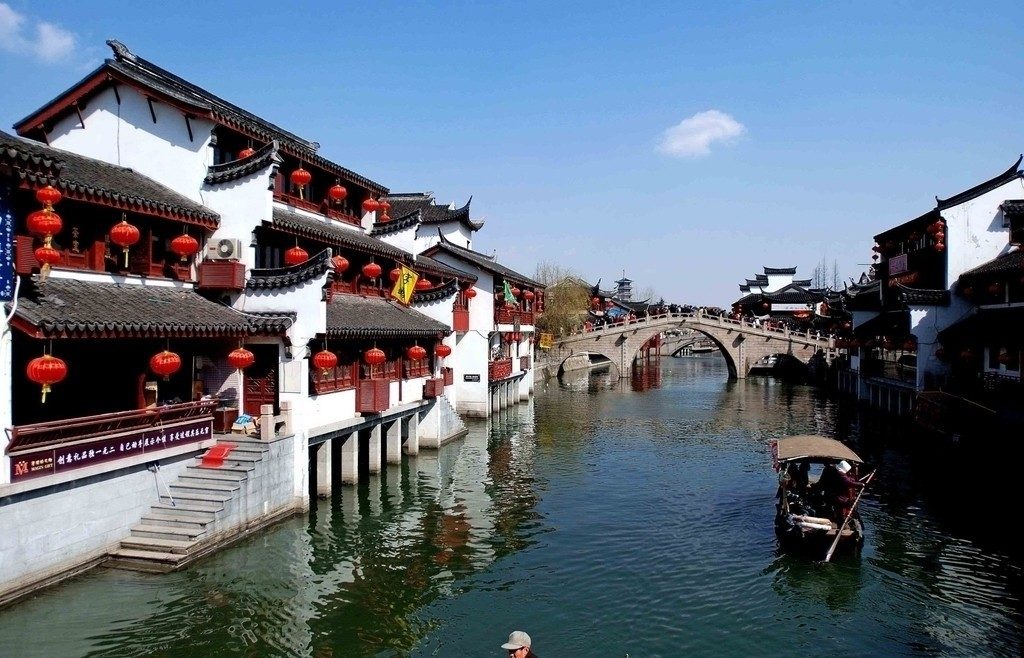
Qibao is a town in Minhang District, Shanghai. Its formation can be traced back to the Five Dynasties and Ten Kingdoms period, to the Northern Song Dynasty. The name comes from the local temple, “Qibao Temple”. Today, Qibao is a tourist attraction, in the area known as Qibao Old Town by the Puhui River with traditional Chinese architecture and a number of attractions, including museums and street food.
Qibao is known for its speciality cuisine, hong shao rou (“red braised pork”), cooked using a combination of ginger, garlic, aromatic spices, chilli peppers, sugar, light and dark soy and sometimes rice wine.[citation needed] The town was also once the residence of the noted painter Zhang Chongren, a friend of the Belgian cartoonist Hergé, on whom the character Chang Chong-Chen from “The Adventures of Tintin” was based. Qibao is also known for crickets (with a “Cricket House”) in the Qibao Old Town area.
People’s Square
(Renmin Guang Chang)
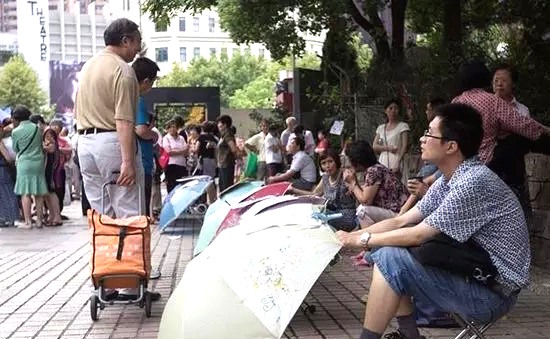
People’s Square is a large public square in the Huangpu District of Shanghai, China. It is south of Nanjing Road (West) and north of Huaihai Road (East). People’s Square is the site of Shanghai’s municipal government headquarters building and is used as the standard reference point for measurement of distance in the Shanghai municipality.
Prior to 1949 and the establishment of the People’s Republic of China, what is now People’s Square was a course for horse racing owned by the Shanghai Race Club. After gambling and horse racing were banned by the new Communist government, a part of the race course became People’s Square, which included a large avenue and spectator stands for use during parades.
Xintiandi

Xintiandi is an affluent car-free shopping, eating and entertainment district of Shanghai, China.
The district is composed of an area of reconstituted traditional mid-19th century shikumen (“stone gate”) houses on narrow alleys, some adjoining houses which now serve as book stores, cafes and restaurants, and shopping malls. Most of the cafes and restaurants feature both indoor and outdoor seating. Xintiandi has an active nightlife on weekdays as well as weekends, though romantic settings are more common than loud music and dance places. It is considered one of the first lifestyle centers in China. It is also the most expensive place to live in China, with some apartments costing more than Tokyo, New York and London. It is home to the Chinese elite and top executive expats.
Xintiandi is the location of the site of the first congress of the Communist Party of China, now preserved at the Museum of the First National Congress of the Chinese Communist Party. Also nearby are the Shikumen Open House Museum and the site of the Provisional Government of the Republic of Korea when Korea was a Japanese colony.
Nanjing Road
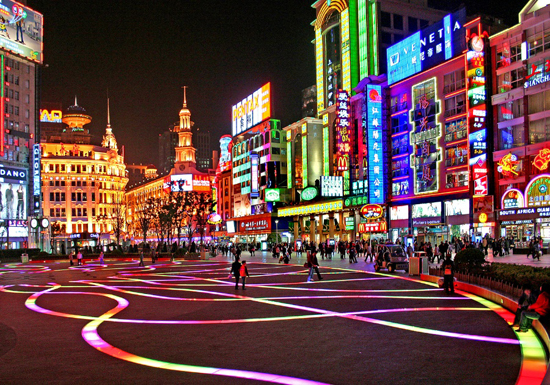
Nanjing Road is the main shopping street of Shanghai, China, and is one of the world’s busiest shopping streets. The street is named after the city of Nanjing, capital of Jiangsu province neighboring Shanghai. Today’s Nanjing Road comprises two sections, Nanjing Road East and Nanjing Road West. In some contexts, “Nanjing Road” refers only to what was pre-1945 Nanjing Road, today’s Nanjing Road East, which is largely pedestrianized. Before the adoption of the pinyin Romanization in the 1950s, its name was rendered as Nanking Road in English.
The Bund (外滩)
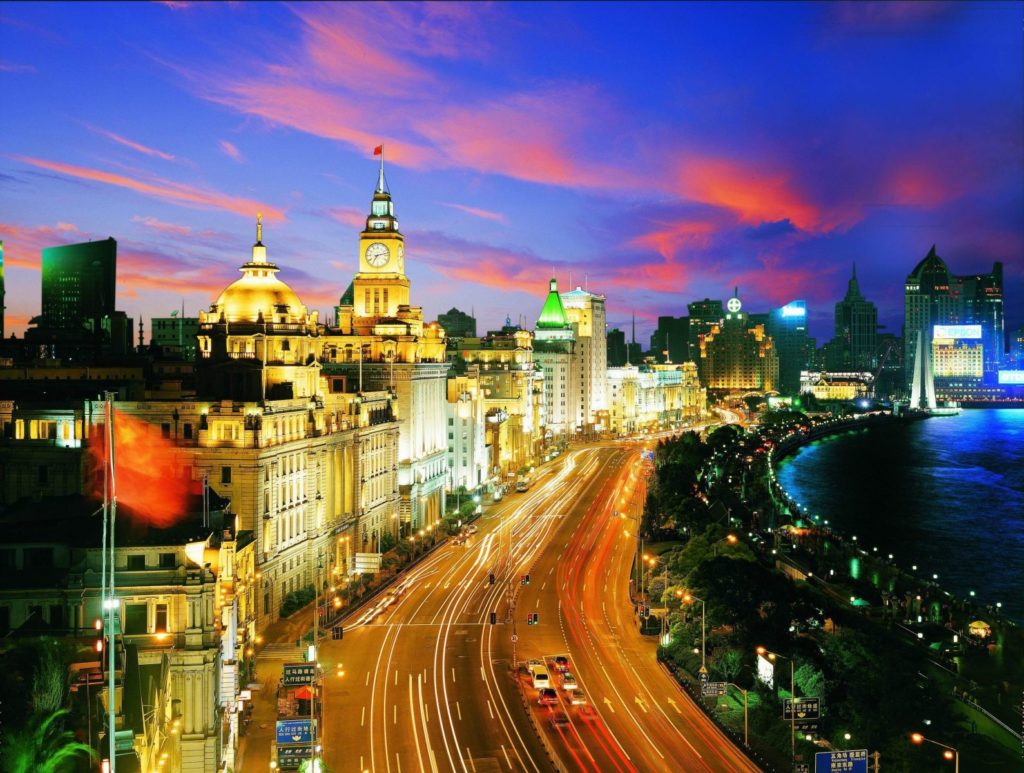
The Bund or Waitan is a waterfront area in central Shanghai. The area centers on a section of Zhongshan Road (East-1 Zhongshan Road) within the former Shanghai International Settlement, which runs along the western bank of the Huangpu River in the eastern part of Huangpu District. The area along the river faces the modern skyscrapers of Lujiazui in the Pudong District. The Bund usually refers to the buildings and wharves on this section of the road, as well as some adjacent areas. It is one of the most famous tourist destinations in Shanghai. Building heights are restricted in the area.
Shanghai Circus World: ERA Intersection of Time Acrobatics Show
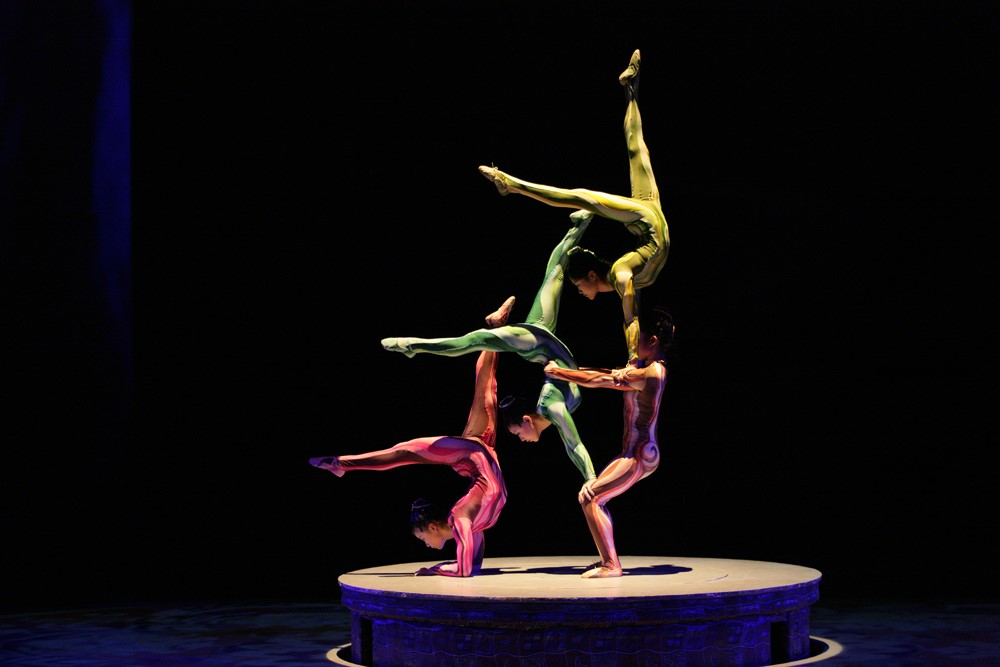
Shanghai Circus World, regarded as China’s ‘No. 1 Circus World’ is located in Zhabei District. Situated opposite the Zhabei Stadium to the south it is adjacent to Guangzhong Park to the north.
It has a distinctive architecture with a splendid golden vault and can seat an audience of 1638. The advanced stage facilities, lighting and sound equipment enable it to be a comprehensive performance site, which holds domestic and international circus programs, acrobatics, singing and dancing performances as well as the Shanghai International Magic Festival & Competition.
 TH
TH 


